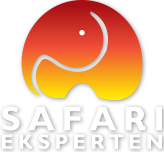Makgadikgadi and Nxai Pans
These two national parks contain not only some of the largest salt flats in the world, but also dry savannah dotted with beautiful palms and baobabs. They are separated by an asphalt highway, running from the east to the west. Along this road it is some 160km to the town of Maun, where there is a small international airport.
The animal life of Makgadikgadi is richest in and around the forests that grow along the Boteti River at the end of the dry season in September and November. Zebra, wildebeest, greater kudu and giraffe are the most common animals, and they are preyed upon by lions, leopard and spotted hyena. In Nxai the animals are at their most numerous during the wet summer months from December to March, when they arrive to graze on the new grass shoots growing around the salt pans. Many of the large herbivores give birth around this time. In particular wildebeest, zebra and elephants come here at this time, joining the resident springbok, giraffes and ostriches. The district is dotted with beautiful palm trees, and the unique baobabs, with their gigantic trunks. Cheetahs are very common on the grassy plains, while there are good numbers of lions living around the waterholes in this area.
Amongst the districts birds, the colourful rollers, bee-eaters and hornbills are the most eye catching, but there are also many birds of prey. During the rainy season these are outshone by the colossal number of flamingos that can be seen in the shallow salty water that now covers the salt flats.
Book your holiday in Botswana here
Highlights:
- Good numbers of carnivores along the River Boteti in Makgadikgadi and on the plains of Nxai.
- Wandering herds of wildebeest and zebra that mix with the “resident” animals.
High season: September to November in Makgadikgadi and December to March in Nxai
These attractions can be seen on the following tours

























